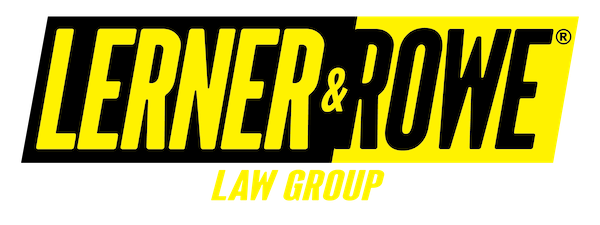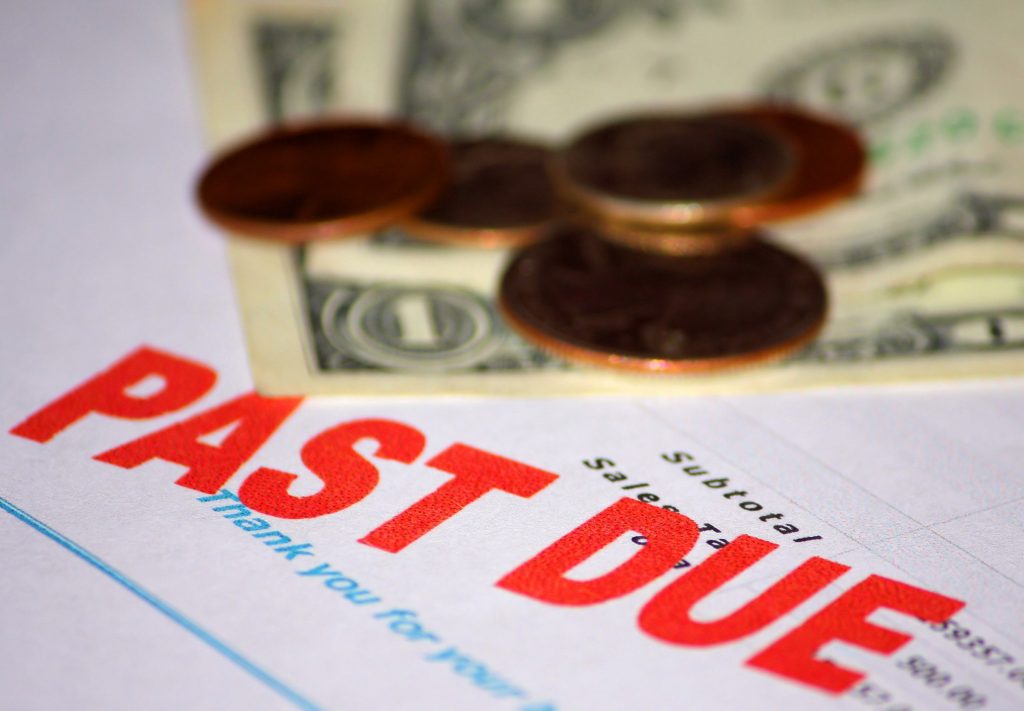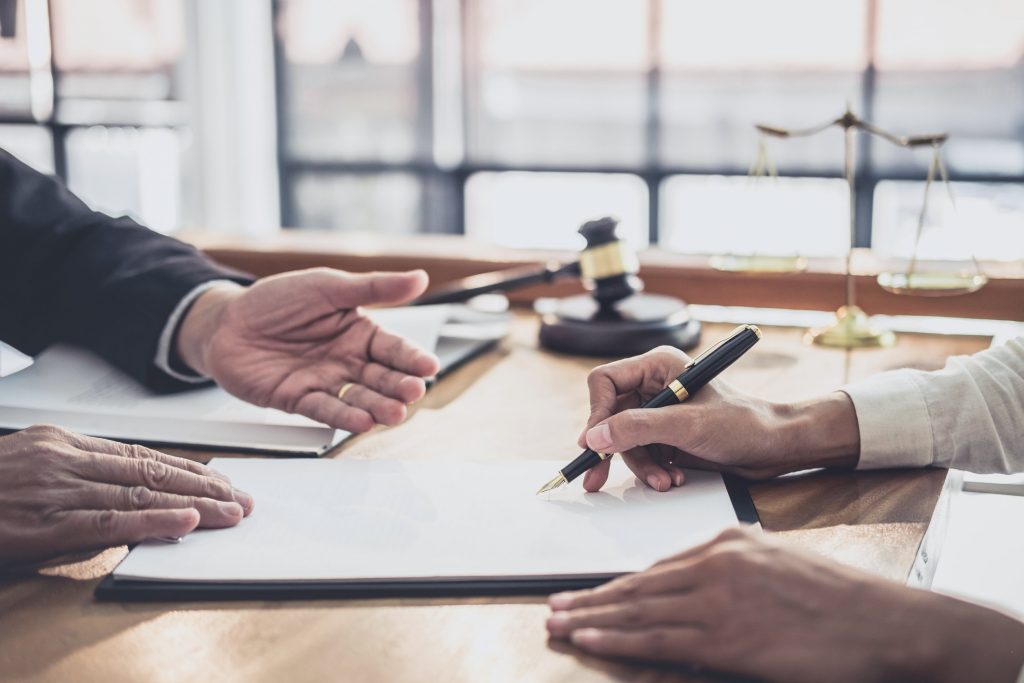Are you considering filing for bankruptcy in the state of Arizona? If so, you’re not alone—in 2020, more than 13,000 individuals filed for either Chapter 7 or Chapter 13 bankruptcy across the state. You may already be aware of the various reasons why a person may or may not choose to file for bankruptcy.
But do you have an overall idea of how the process works? Find out what to expect during the bankruptcy process with this step-by-step guide from the Arizona bankruptcy attorneys at Lerner and Rowe Law Group.
#1: Obtain a Certificate of Credit Counseling
Before beginning the bankruptcy process in Arizona, debtors must first complete a credit counseling course that has been approved by the U.S Trustee’s office. The course must be completed within 180 days before you file. You’ll need to include your certificate and copies of any debt repayment plans developed in credit counseling in your bankruptcy petition.
#2: File a Petition with the Bankruptcy Court
The first official step in the bankruptcy process is to file a petition with the U.S. Bankruptcy Court for the District of Arizona. The bankruptcy petition will be filed along with a Statement of Your Social Security Number and a certification that you have completed an approved credit counseling course. In addition, you will file the following completed forms (also called schedules and statements):
- Schedule A/B: lists all your real and personal property, plus their current value
- Schedule C: lists all property you wish to exempt from liquidation (i.e., homestead or vehicle exemption)
- Schedule D: lists all your creditors with claims that are secured by property (i.e., car loans or mortgage loans)
- Schedule E/F: lists all your creditors with claims that are unsecured (i.e., credit card debt)
- Schedule G: lists any ongoing leases or contracts (i.e., residential leases or internet contracts)
- Schedule H: lists any codebtors you may have (i.e., cosigners, guarantors, a former spouse)
- Schedule I: lists your employer, wages, and monthly income
- Schedule J: lists your monthly expenses, including food, clothing, shelter, transportation, taxes, utilities, etc.
- Summary of Your Assets and Liabilities and Certain Statistical Information: totals information in the previous forms
- Statement of Financial Affairs for Individuals Filing for Bankruptcy: provides a summary of your financial history for a period of time prior to filing
If you’re filing for Chapter 7 bankruptcy, you will also need to complete the following forms:
- Chapter 7 Statement of Your Current Monthly Income and Means Test Calculation: determines whether or not you are eligible to file for Chapter 7
- Statement of Intention for Individuals Filing Under Chapter 7: explains what you intend to to with property that may be used as collateral for a claim or any leased personal property
If you’re filing for Chapter 13 bankruptcy, you will need to complete these forms:
- Chapter 13 Statement of Your Current Monthly Income, Calculation of Commitment Period: determines whether your income is at or below the median income for households of the same size in Arizona, and the minimum number of months your plan will be.
- Chapter 13 Calculation of Your Disposable Income: establishes the criteria that will determine how much you’ll be required to pay your creditors.
In addition to these forms, you must file a repayment plan within 14 days of filing your petition if you are filing for Chapter 13. The repayment plan must include fixed amount payments to be paid to the trustee on a monthly basis until the end of the proposed repayment plan.
#3: Pay Court Filing Fees, or Have Them Waived
The Court filing fee for a Chapter 7 bankruptcy is currently $338, while the Court filing fee for a Chapter 13 bankruptcy is currently $313. You can make these payments upfront or you can request an installment agreement to make payments (within 120 days of filing). If you cannot afford the filing fees and your income is less than 150% of the poverty level, you may be able to have these fees waived.
#4: Automatic Stay Goes into Effect
The automatic stay can be a lifeline for those who have been continually harassed by debt collectors. An automatic stay is a legal provision triggered when you file for Chapter 7 or Chapter 13 bankruptcy that prevents certain types of creditors from trying to collect on any outstanding claims. Although temporary, the automatic stay can give you time to regroup before you begin your repayment plan or have your debt discharged. The automatic stay includes protection from the following:
- Evictions. The automatic stay can put a temporary halt on some eviction proceedings. This may give you enough time to find a new place to live if you can no longer afford the monthly rent or to catch up on missed rent payments and stay in your rental.
- Utilities. An automatic stay can prevent you from having necessary utilities like water and power shut off for as long as 20 days.
- Foreclosure. An automatic stay won’t stop a foreclosure altogether, but it can delay the proceedings until the bankruptcy process has been completed.
- Wage Garnishment. The automatic stay can put a stop to wage garnishment.
#5: Attend the Meeting of the Creditors
Between 21 and 40 days (up to 50 days for Chapter 13) after you have filed your bankruptcy petition, you and your attorney will need to attend the meeting of the creditors. Also called a 341 hearing, this meeting is conducted by your appointed bankruptcy trustee. Most creditors don’t attend the 341 hearing.
You are required to provide additional documentation to the bankruptcy trustee prior to your meeting. This may include recent bank statements or pay stubs, and at a minimum, your most recent income tax return. These need to be sent to the trustee at least a week prior to the meeting.
At the meeting itself, the trustee will verify your identity and ask questions about your bankruptcy petition, schedules, and statements to ensure that everything it contains is true and accurate. If you’re filing for Chapter 13 bankruptcy, you may also be asked questions about your proposed repayment plan.
If you’re filing for Chapter 7 bankruptcy and the trustee determines that you have no assets which can be liquidated to pay off any of your creditors, and/or property that can be recovered from third parties which can be liquidated to pay off any of your creditors, your bankruptcy case will move forward to a final discharge of debt. If you do have assets that can be liquidated or recovered, most unsecured creditors will have the opportunity to file a claim with the court.
#6: Complete a Financial Management Course
Before your Chapter 7 bankruptcy case can move forward and your debt can be discharged, you must complete an approved financial management course (sometimes also called a debtor education course). The purpose of this course is to arm debtors with better financial management strategies so that they don’t have to file for bankruptcy again in the future. This course must be completed and your certificate of completion must be filed within 60 days of the meeting of the creditors.
If you’re filing for Chapter 13 bankruptcy, you are also required to take a debtor education course. You’ll need to complete this step prior to making your last plan payment. (See Step 9)
#7: Debt Is Discharged (Chapter 7 Bankruptcy Only)
After appearing at the meeting of the creditors and completing a debtor education course, the next step in the Chapter 7 bankruptcy process is to discharge remaining debt. This usually takes place within 60 to 90 days after the meeting of the creditors. Most unsecured debts can be discharged in a Chapter 7 bankruptcy, but there are some notable exceptions.
Dischargeable Debts
- Credit card bills
- Medical bills
- Personal loans
- Past due rent / utilities
- Wage garnishment
- Government benefit overpayment
Nondischargeable Debts
- Child support
- Alimony
- Student loans
- Civil / criminal fines
- Most taxes
- HOA fees
A note on exempt property: If you file for Chapter 7 bankruptcy but claim a motor vehicle exemption in order to keep a car which is not paid off, you’ll need to have a plan to pay back your debt. If you’ve managed to stay current on your car payment, one way to do this is to reaffirm your existing debt with your lender. Your interest rate, monthly payment, and the amount you owe on your loan will likely remain the same.
Another option is redeeming your car. Essentially, this entails paying your lender a lump sum equal to the current value of your vehicle, at which point you’ll own the vehicle outright. If you don’t have enough money for a lump sum payment, you may also qualify for a redemption loan through a special lender. Your new loan will be less than what you currently owe, which can be extremely helpful if you owe more on your vehicle than it is worth.
#8: Chapter 13 Plan Confirmation
If you’re filing for Chapter 13, the next step in the bankruptcy process is the Confirmation of your plan. Creditors will have up to 14 days after the initial meeting of creditors (or a continuance thereof) to file any objections to the plan. The chapter 13 trustee will then have 28 more days to file a recommendation regarding the plan. After the chapter 13 trustee files the recommendation, you will have 30 days to resolve any plan objections and the chapter 13 trustee’s recommendation, and submit a stipulated confirmation order to the chapter 13 trustee or request a court hearing before a bankruptcy judge.
Generally speaking at this point you will have already begun making payments to the bankruptcy trustee, since payment must begin within 30 days of filing your petition (even though the repayment plan has not yet been formally approved).
When your repayment plan is approved, the bankruptcy trustee will begin distributing funds to creditors soon thereafter. If the court does not approve the payment plan, some (but not all) of the funds you’ve paid to the trustee will be returned to you.
#9: Chapter 13 Debt Is Discharged
Once you have completed your repayment plan under Chapter 13 (a process that usually takes between 3 to 5 years), you have the chance to discharge any remaining dischargeable debt. In order to qualify for a Chapter 13 discharge, you must have made all your payments, be current on all domestic support obligations, and complete an approved course in financial management.
Get Help Filing for Bankruptcy in Arizona
Bankruptcy is a complex and often lengthy legal process. Before you choose bankruptcy or another type of debt consolidation, consider having your finances reviewed by a professional. At Lerner and Rowe Law Group, we offer free initial consultations to anyone who’s considering filing for Chapter 7 or Chapter 13 bankruptcy.
Let our experienced Arizona bankruptcy lawyers review your case at no charge—and with no obligation to retain our services. Should you decide to move forward with us, our firm offers $0 down bankruptcies in addition to affordable payment plans.
To schedule your free consultation, call us at 602-667-7777 (Phoenix) or 520-620-6200 (Tucson). Representatives are also standing by to help you and answer your questions via LiveChat. Alternatively, you can request your complimentary case review by simply filling out this form.




